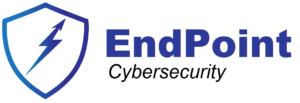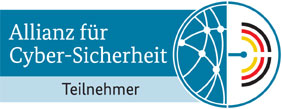Comparing “Records of Processing Activities” (ROPA) and “Data Protection Impact Assessments” (DPIA) (with Podcast)
Understanding ROPA and DPIA: Key GDPR Concepts for Tech Companies
Podcast of this article:
Let’s explore two essential components of GDPR compliance: Records of Processing Activities (ROPA) and Data Protection Impact Assessments (DPIA).
ROPA provides a comprehensive overview of your data handling, while DPIA focuses on assessing and mitigating risks for specific, higher-risk activities.
Records of Processing Activities (ROPA): Your Company’s Data Map
Think of ROPA as your company’s data map. It documents every step of the data journey, from collection to deletion.
It’s about what data you collect, including why, how, and with whom you share it.
A well-maintained ROPA is crucial for demonstrating GDPR compliance and building trust with your users.
What ROPA Covers
- Purposes of Processing: Be specific! Instead of “marketing,” say “personalized email marketing based on user browsing history” or “improving product recommendations based on user purchase data.”
- Categories of Data Subjects: Identify who the data relates to (e.g., customers, employees, website visitors, app users).
- Categories of Personal Data: List the types of data you process (e.g., name, email address, IP address, location data, browsing history, biometric data).
- Recipients of Personal Data: Specify who you share data with (e.g., cloud storage providers, marketing agencies, analytics platforms, law enforcement). Include both internal and external recipients.
- Transfers to Third Countries: If you transfer data outside the EU, document the safeguards in place (e.g., adequacy decisions, standard contractual clauses).
- Data Retention Periods: Specify how long you keep different types of data. This should be based on legal requirements and business needs.
- Technical and Organizational Security Measures: Briefly describe the security measures you have in place to protect the data (e.g., encryption, access controls, data masking).
ROPA Examples for Tech Companies
- Social Media Platform: A social media platform’s ROPA would detail processing activities related to user profiles, posts, photos, friend connections, messaging, targeted advertising, and data analytics. It would specify data categories (e.g., profile information, IP address, location data, browsing history), purposes (e.g., personalized content delivery, targeted advertising, platform improvement), and recipients (e.g., advertising partners, analytics providers).
- SaaS Provider: A SaaS provider’s ROPA would document processing related to user account management, data storage, application usage tracking, customer support interactions, and billing. It would include details about data categories (e.g., user credentials, company data, usage logs), purposes (e.g., providing the service, improving performance, customer support), and recipients (e.g., cloud hosting providers, payment processors).
- Mobile App Developer: A mobile app developer’s ROPA would cover data processing within the app, such as collecting user location data for personalized recommendations, accessing contacts for social features, or tracking in-app purchases. It would detail the data categories (e.g., location, contacts, purchase history), purposes (e.g., personalized recommendations, social features, in-app advertising), and recipients (e.g., location services providers, advertising networks).
Data Protection Impact Assessments (DPIA): Proactive Risk Management
A DPIA is a more in-depth analysis triggered by specific processing activities that pose a high risk to individuals.
With the DPIA you’re identifying risks, and also finding ways to mitigate them and demonstrating that you’ve considered data protection all the way.
What DPIA Covers
- Description of the Processing Operations: Clearly explain the planned processing, including the purposes, data categories, and processing methods.
- Necessity and Proportionality: Justify why the processing is necessary and proportionate to the intended purpose. Are there less intrusive ways to achieve the same goal?
- Assessment of Risks to Individuals: Identify potential risks to individuals’ rights and freedoms, such as identity theft, discrimination, loss of control over their data, or reputational damage. Consider the likelihood and severity of these risks.
- Measures to Address the Risks: Describe the measures you will implement to mitigate the identified risks. This might include technical measures (e.g., encryption, anonymization), organizational measures (e.g., access controls, data minimization policies), and legal measures (e.g., data processing agreements).
- Consultation with Data Protection Authorities (DPA): In some cases, you may need to consult with your local DPA before carrying out high-risk processing.
DPIA Examples for Tech Companies
- Facial Recognition Software: A company developing facial recognition software for security purposes would need a DPIA. The DPIA would assess risks related to accuracy, bias, potential for misuse, and impact on individuals’ privacy and freedom of movement. Mitigation measures might include strict access controls, data anonymization techniques, and clear guidelines for use.
- AI-Powered Recommendation Engine: A company launching a new AI-powered personalized recommendation engine that analyzes large volumes of user data would require a DPIA. The DPIA would analyze the risks of profiling, discrimination, and loss of privacy. Mitigation measures could include data minimization, differential privacy techniques, and user consent mechanisms.
- Biometric Authentication: A company implementing large-scale biometric authentication for access control would need a DPIA. The DPIA would evaluate the risks of data breaches, identity theft, and potential misuse of biometric data. Mitigation measures could include secure storage of biometric data, multi-factor authentication, and strict access controls.
ROPA and DPIA: Similarities and Differences
ROPA and DPIA are like two sides of the same coin – both essential for responsible data handling under GDPR. They work together to ensure your data processing is transparent, accountable, and respects individuals’ privacy.
Similarities
- GDPR Compliance:
- Both ROPA and DPIA are mandated by the GDPR (Articles 30 and 35, respectively).
- They’re not optional; they’re legal requirements for many organizations.
- Focus on Data Protection:
- At their core, both aim to protect individuals’ rights and freedoms related to their personal data.
- They promote a privacy-first approach to data processing.
- Documentation is Key:
- Both require thorough documentation.
- ROPA is the documented record of your processing activities, and DPIA results in a documented risk assessment report.
- Good record-keeping is crucial for demonstrating compliance.
- Accountability:
- Both contribute to demonstrating accountability.
- By maintaining a ROPA and conducting DPIAs, you show that you’re taking data protection seriously and actively managing risks.
Differences
- Scope:
- ROPA covers all your data processing activities,
- DPIA focuses on specific, high-risk processing activities.
- Think of ROPA as the big picture and DPIA as a focused close-up.
- Purpose:
- ROPA’s primary purpose is to document and provide transparency about all your data processing.
- DPIA’s main goal is to assess and mitigate the risks of particular processing activities that are likely to be high-risk.
- Requirement:
- ROPA is a general requirement for most organizations (especially those with over 250 employees or those processing sensitive data).
- DPIA is only required when processing activities are likely to result in a high risk to individuals’ rights and freedoms. It’s triggered by specific circumstances.
- Outcome:
- ROPA produces a comprehensive record of your processing activities.
- DPIA results in a risk assessment report outlining potential risks and the measures you’ll take to mitigate them.
- One is a detailed inventory, the other a focused risk analysis.
- Timing:
- ROPA is an ongoing requirement – you need to keep it updated as your processing activities change.
- DPIA is conducted for specific projects or plans before they are implemented. It is a point-in-time assessment.
In a nutshell:
- ROPA is your ongoing data processing inventory, demonstrating your overall approach to data protection.
- DPIA is a targeted risk assessment for specific, potentially high-risk projects, ensuring you’ve considered and addressed privacy concerns before they become a problem.
- Both are essential tools in your GDPR compliance toolkit.
The post Comparing “Records of Processing Activities” (ROPA) and “Data Protection Impact Assessments” (DPIA) (with Podcast) first appeared on Sorin Mustaca on Cybersecurity.



